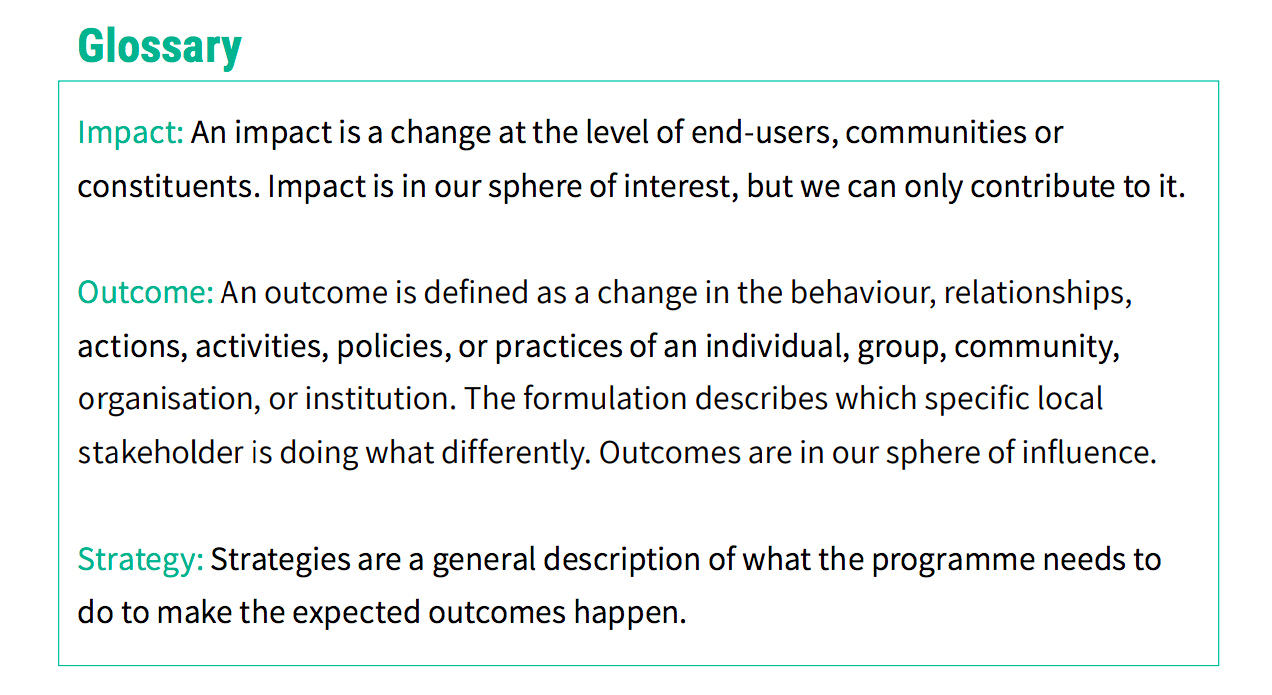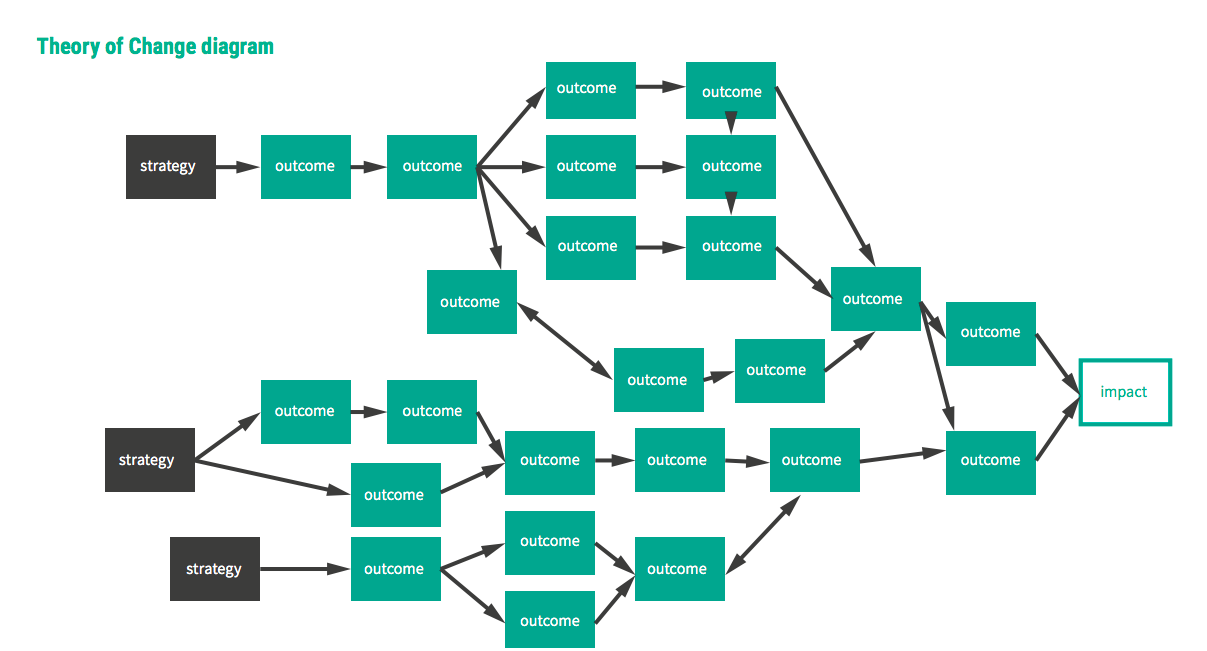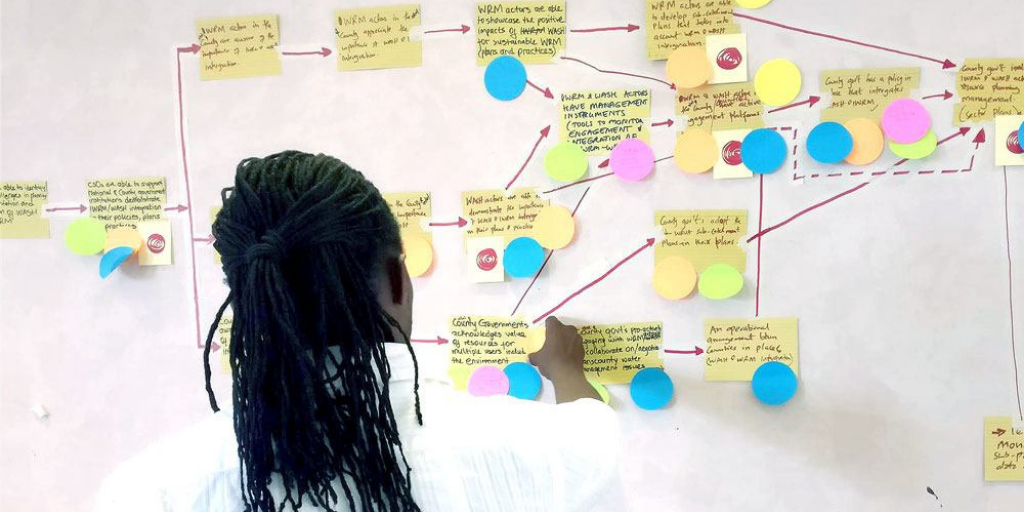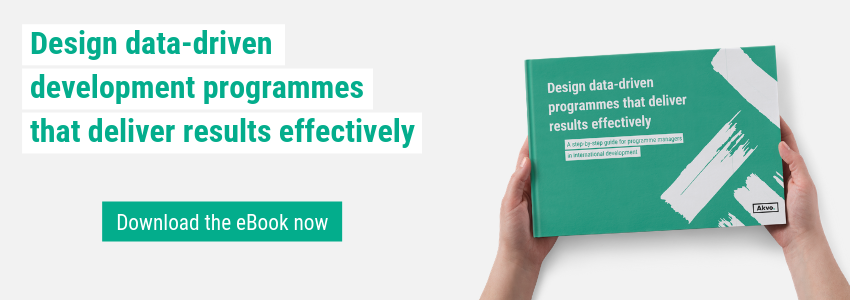As the name suggests, a Theory of Change is a hypothesis of how we think change occurs. It consists of a visual diagram and a narrative with causal assumptions - “if we do X, Y happens because we believe Z.” ToCs are also referred to as Intervention Logics or Results Chains. When designed with an understanding of factors and stakeholders, a ToC helps to make sense of and navigate the complex environment in which the programme is operating. A ToC is a perception of reality which is shaped by the norms, values, experience and beliefs of the people who create it. It’s therefore important to involve different stakeholders, to be sure different perspectives are captured in the ToC. Designing a ToC together will:
- Lead to a common understanding of how change occurs
- Create awareness on different norms and values between stakeholders
- Generate co-ownership of the programme
- Help to decide on the scope of the programme
- Support decision-making on what interventions should be pursued to achieve the biggest impact by whom
- Expose gaps in your activities or show you where there is an overlap with the activities of other actors or programmes.
Below are the five steps to defining a Theory of Change.

1. Define your desired impact
When designing a ToC, the first thing that needs to be identified is the desired long-term impact the programme wants to achieve or contribute to. After identifying the intended impact, the participants can determine which outcomes need to be achieved in order to reach that long-term impact. An example of an impact statement is sustainable and inclusive water, sanitation and hygiene (WASH) services.
2. Determine your outcomes
An outcome is a change in the behaviour, relationships, actions, activities, policies, or practices of an individual, group, community, organisation, or institution. In order to phrase an expected outcome, it helps to use the following mnemonic: “who should be doing what differently?” For example, the ministry of water use the online water quality dashboard to make decisions on investment priorities.
3. Identify your pathways of change
Once all expected outcomes have been identified on cards, they can be organised on the wall in logical cause and effect relationships. When a programme has several topics or issues, separate pathways of change can be built for each of them, with small teams who can zoom into each specific topic. The resulting pathways of change can then be collectively connected at the end to have the full Theory of Change.

4. Specify your strategies
Once the stakeholders have identified one or multiple pathways of change, they can come up with strategies to set into motion the causal chain of events. Strategies are a general description of what the programme needs to do to make the expected outcomes happen. Every strategy will have a pathway of change. Strategies are a general description of what needs to be done; the more specific activities in the strategies will be defined later. In reality, strategies may already be determined before the expected outcomes are mapped and an impact is defined. In that case, the ToC design exercise will help to identify the expected outcomes and their causal relationships and understand how the strategies will lead to the envisioned impact. For example, we support the ministry of water with data collection and analysis for water point mapping.
5. Connect your pathways of change
Once the strategies, expected outcomes, impact(s), and their linkages are identified, the underlying causal assumptions should be made explicit. Trying to document these assumptions can lead to the identification of weak spots in the Theory of Change and, at the same time, result in stakeholders becoming aware of each other’s visions of reality. When phrasing causal assumptions, it can be tempting to start a circular reasoning.
Avoid phrases like “A leads to B, because B is the result of A”. Instead, try reasoning as follows: “If we do action X, we will contribute to outcome Y because we believe that Z.” For example, if we support the ministry of water with data collection and analysis for water point mapping, then they will use the map for decision making on investment priorities, because they were actively involved in the identification of the problem (no updated information on functionality of water points) and feel co-ownership of the solution (data collection for evidence-based decisions).

Once you’ve designed your Theory of Change, you can build your tailor-made planning, monitoring, evaluation and learning (PMEL) framework, which will allow you to accurately monitor your results.
Do you want to learn more? Download our eBook!



